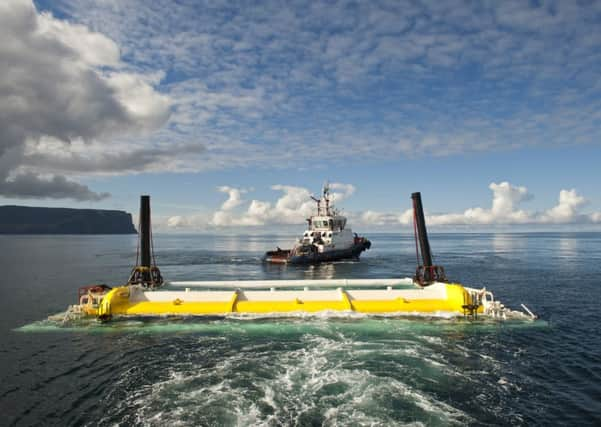On the verge of commercially viable tidal energy


Tests are now being carried out at the European Marine Energy Centre in Orkney on a turbine device and mooring system developed by renewable energy engineers in Glasgow.
Nautricity, a company which emerged from Strathclyde University, has spent 18 months building its first commercial-scale device known as a Contra Rotating Marine Turbine (Cormat).
Advertisement
Hide AdAdvertisement
Hide AdWith the help of a £250,000 Smart Scotland grant from Scottish Enterprise, it has also developed and patented a tethered-based mooring system, called a Hydrobuoy, that ensures the Cormat devices remain steady in strong currents.
Cameron Johnstone, the company’s co-founder and chief executive, said testing the device at full scale in real-life conditions was an important step forward that would produce valuable data to allow the company to move to full commercial deployment.
“Once we have demonstrated the technology here and shown that it can provide affordable electricity, we will then build out at home and overseas,” he said. “In order to be able to compete abroad in the future, it’s essential that we have a robust, indigenous market from which to launch our international business development.”
Johnstone said the firm was “doing all of the right things in developing lower-cost, next-generation technology” through a comprehensive testing programme and was gathering the data to ensure the devices taken to market work effectively and can compete with other forms of energy generation.
He said conventional tidal devices resemble wind turbines constructed on the seabed, but they incur “enormous deployment and engineering costs”.
Cormat, he said, is a lighter and more compact device, tethered to the seabed and held in tension by a sub-surface float.
The turbines can be used in depths of up to 500 metres and, because they are closely spaced and contra-rotating rotors move in opposite directions, they remain steady in the face of strong tidal flows.